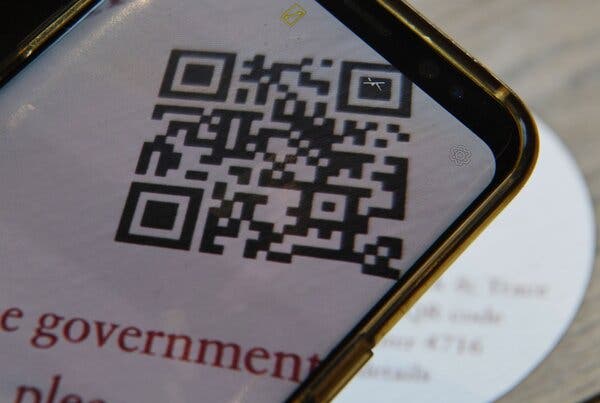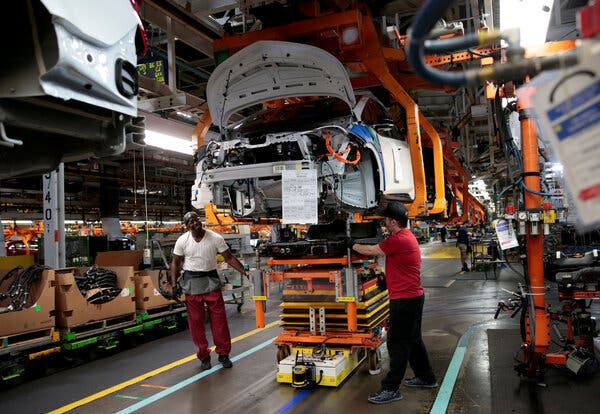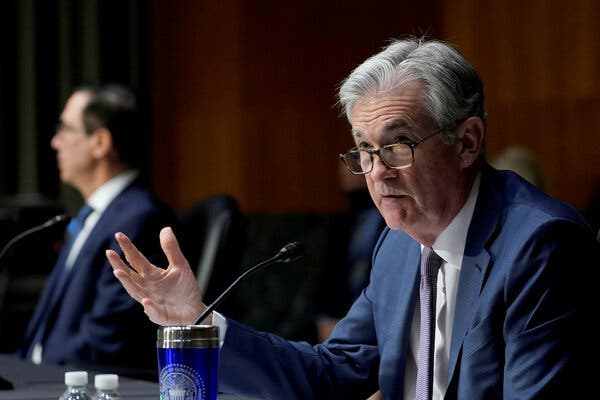Will Smith and the director Antoine Fuqua said on Monday that they were pulling their upcoming film production “Emancipation” out of Georgia because of the state’s new voting law, which has been denounced by activists as an effort to make voting harder for the state’s Black population.
The slavery-era drama, which is being produced and financed by Apple Studios, is the first major production to cite the law as a reason to leave the state, which offers generous tax incentives to Hollywood productions and has become a major hub for Marvel Studios, Netflix and other industry heavyweights.
“At this moment in time, the nation is coming to terms with its history and is attempting to eliminate vestiges of institutional racism to achieve true racial justice,” Mr. Smith and Mr. Fuqua said in a joint statement. “We cannot in good conscience provide economic support to a government that enacts regressive voting laws that are designed to restrict voter access. The new Georgia voting laws are reminiscent of voting impediments that were passed at the end of Reconstruction to prevent many Americans from voting. Regrettably, we feel compelled to move our film production work from Georgia to another state.”
In the film, set to begin production this summer, Mr. Smith was set to play the real-life enslaved man named Peter, who emancipated himself from a Southern plantation and joined the Union Army. His story became famous after photographs of his back, scarred by whippings, appeared in the pages of Harper’s Weekly.
Whether or not this move will prompt other studios to reconsider productions in Georgia is not clear. Stacey Abrams, along with Tyler Perry, who owns his own studio in Atlanta, and others have urged Hollywood not to uproot productions despite outrage over the new law.

A classic American pastime — baseball-card collecting — is getting a 21st-century update. Topps, the collectibles and candy company, and Worldwide Asset Exchange, a blockchain platform, are selling NFTs, or nonfungible tokens, of this season’s Major League Baseball trading card series, the DealBook newsletter reports.
WAX minted more than a million NFTs for 75,000 digital card packs. The series digitizes nearly 2,000 images to be sold in packs of six or 45 cards starting next week.
For M.L.B., the tokens essentially will act as an annuity, with the league receiving a fraction of every resale via conditions written into their code. That is a new source of revenue that didn’t exist with old-fashioned cards.
Top Shots, the National Basketball Association’s NFTs, are among the most popular assets to take off in the recent craze. They have generated nearly $150 million in sales over the past month alone, according to DappRadar, and the company behind the Top Shots recently raised $305 million in funding.
With physical cards it has been difficult to establish how many cards were issued and to ensure the authenticity of a supposedly rare one, said William Quigley, WAX’s co-founder, but NFTs have built-in authentication and verification data.
Topps is riding high as the pandemic has driven new interest in memorabilia, especially trading cards. And NFTs are not the only hot trend Topps is betting on: The company is going public via a SPAC — a special purpose acquisition company, described as the “new way of doing an M.&.A deal” — in a deal that values it at $1.3 billion, DealBook reported last week.

The United States budget deficit grew to a record $1.7 trillion in the six months since October, as the federal government continued to pump huge sums of money into the economy to help workers and businesses cope with the pandemic.
The figure comes in the wake of a $1.9 trillion economic rescue package that Congress passed in March and as the Biden administration and Democrats are considering spending trillions of dollars more on a sweeping legislative package to overhaul the nation’s infrastructure.
Federal spending is far outpacing revenue — the United States is doling out twice as much money as it takes in, having spent a record $3.4 trillion so far this fiscal year, which began Oct. 1, and collected just $1.7 trillion in tax revenue.
The spending continued at a record clip in March, when the government spent $927 billion, the highest total on record for any March and the third highest total of any month to date. The deficit for March was $660 billion.
A Treasury official said that the data showed a substantial increase from a year ago, when the pandemic was just setting in and the economy was starting to shed jobs. The budget deficit, which is the gap between what the government spends and what it takes in, is expected to continue to swell in the coming months as money from the stimulus bill continues to roll out.
In the first six months of the fiscal year, spending was up sharply for nutrition assistance programs, economic impact payments and expanded jobless benefits. Money for small-business loans made through the Paycheck Protection Program and funds for education and health providers also contributed to the record outlays.
Economic policymakers have said that the budget shortfall is a long-term concern but that it is manageable now.
“The U.S. federal budget is on an unsustainable path,” Jerome H. Powell, the Federal Reserve chair, said on CBS’s “60 Minutes” on Sunday. “Meaning the debt is growing faster than the economy. And that’s kind of unsustainable in the long run.”
He added: “That doesn’t mean debt is at an unsustainable level today. It’s not. We can service the debt we have.”

An update to the contact tracing app used in England and Wales has been blocked from release by Apple and Google because of privacy concerns, renewing a feud between the British government and the two tech giants about how smartphones can be used to track Covid-19 cases.
In an attempt to trace possible infections, the update to the app would have allowed a person who tests positive for the virus to upload a list of restaurants, shops and other venues they recently visited, data that would be used by health officials for contact tracing. But collecting such location information violates the terms of service that Google and Apple forced governments to agree to in exchange for making contact tracing apps available on their app stores.
The dispute, first reported by the BBC, highlights the supernational role that Apple and Google have played responding to the virus. The companies, which control the software of nearly every smartphone in the world, have forced governments to design contact tracing apps to their privacy specifications, or risk not having the tracking apps made available to the public. The gatekeeper role has frustrated policymakers in Britain, France and elsewhere, who have argued those public health decisions are for governments, not private companies to make.
The release of the app update was to coincide with England’s relaxation of lockdown rules. On Monday, the country began loosening months of Covid-related restrictions, allowing nonessential shops to reopen, and pubs and restaurants to serve customers outdoors.
An older version of the contact tracing app continues to work, but the data is stored on a person’s device, rather than being kept in a centralized database.
To use the app, visitors to a store or restaurant take a photo of a poster with a QR code displayed in the business, and the software keeps a record of the visit in case someone at the same location later tests positive.
Apple and Google are blocking the update that would let people upload the history of the locations they have checked into directly to health authorities.
The Department of Health and Social Care said it is in discussions with Apple and Google to “provide beneficial updates to the app which protect the public.”
Apple and Google declined to comment.

Saudi Aramco, the national oil company of Saudi Arabia, has reached a deal to raise $12.4 billion from the sale of a 49 percent stake in a pipeline-rights company.
The money will come from a consortium led by EIG Global Energy Partners, a Washington-based investor in pipelines and other energy infrastructure.
Under the arrangement announced on Friday, the investor group will buy 49 percent of a new company called Aramco Oil Pipelines, which will have the rights to 25 years of payments from Aramco for transporting oil through Saudi Arabia’s pipeline networks.
Aramco is under pressure from its main owner, the Saudi government, to generate cash to finance state operations as well as investments like new cities to diversify the economy away from oil.
The company has pledged to pay $75 billion in annual dividends, nearly all to the government, as well as other taxes.
Last year, the dividends came to well in excess of the company’s net income of $49 billion. Recently, Aramco was tapped by Crown Prince Mohammed bin Salman, the kingdom’s main policymaker, to lead a new domestic investment drive to build up the Saudi economy.
The pipeline sale “reinforces Aramco’s role as a catalyst for attracting significant foreign investment into the Kingdom,” Aramco said in a statement.
From Saudi Arabia’s perspective, the deal has the virtue of raising money up front without giving up control. Aramco will own a 51 percent majority share in the pipeline company and “retain full ownership and operational control” of the pipes the company said.
Aramco said Saudi Arabia would retain control over how much oil the company produces.
Abu Dhabi, Saudi Arabia’s oil-rich neighbor, has struck similar oil and gas deals with outside investors.

Two South Korean manufacturers of electric vehicle batteries that are building plants in the United States said on Sunday that they had reached a $1.8 billion settlement in a trade secrets dispute that threatened the domestic battery supply and, with it, the Biden administration’s green agenda.
The announcement came on the day of a deadline set by the United States’ trade representative to decide whether to veto a ruling by another federal agency, the U.S. International Trade Commission, in an intellectual property case between LG Energy Solution and SK Innovation, reports Ephrat Livni for The New York Times.
The commission’s ruling in favor of LG would have banned SK from supplying batteries in the U.S. market after it fulfills existing contracts with Ford and Volkswagen and could have put at risk a plant that the company is building in Georgia.
Both Democratic and Republican officials from that state had urged the Biden administration to veto the ruling, arguing that it could cost thousands of jobs and billions of dollars in investment.
President Biden called the settlement “a win for American workers and the American auto industry” in a statement on Sunday. “A key part of my plan to Build Back Better is to have the electric vehicles and batteries of the future built here in America, all across America, by American workers,” he said.

A year into the pandemic, there are signs that the American economy is stirring back to life, with a falling unemployment rate and a growing number of people back at work. Even mothers — who left their jobs in droves in the last year in large part because of increased caregiving duties — are slowly re-entering the work force.
But young Americans — particularly women between the ages of 16 and 24 — are living an altogether different reality, with higher rates of unemployment than older adults. And many thousands, possibly even millions, are postponing their education, which can delay their entry into the work force.
New research suggests that the number of “disconnected” young people — defined as those who are in neither school nor the work force — is growing. For young women, experts said, the caregiving crisis may be a major reason many have delayed their education or careers.
Last year, unemployment among young adults jumped to 27.4 percent in April from 7.8 percent in February. The rate was almost double the 14 percent overall unemployment rate in April and was the highest for that age group in the last two decades, according to the Bureau of Labor Statistics.
At its peak in April, the unemployment rate for young women over all hit 30 percent — with a 22 percent rate for white women in that age group, 30 percent for Black women and 31 percent for Latina women.
Those numbers are starting to improve as many female-dominated industries that shed jobs at the start of the pandemic, like leisure, retail and education, are adding them back. But roughly 18 percent of the 1.9 million women who left the work force since last February — or about 360,000 — were 16 to 24, according to an analysis of seasonally unadjusted numbers by the National Women’s Law Center.
At the same time, the number of women who have dropped out of some form of education or plan to is on the rise. During the pandemic, more women than men consistently reported that they had canceled plans to take postsecondary classes or planned to take fewer classes, according to a series of surveys by the U.S. Census Bureau since last April.
“We’ve focused in particular on the digital divide and the impact of that on the learning loss for kids,” said Reshma Saujani, founder of the nonprofit group Girls Who Code. “But we’re not talking about how the caregiving crisis is impacting the learning loss for kids and how it’s disproportionately impacting girls and girls of color.”
All of this can have long-term knock-on effects. Even temporary unemployment or an education setback at a young age can drag down someone’s potential for earnings, job stability and even homeownership years down the line, according to a 2018 study by Measure of America that tracked disconnected youth over the course of 15 years.

For the past year, the British economy has yo-yoed with the government’s pandemic restrictions. On Monday, as shops, outdoor dining, gyms and hairdressers reopened across England, the next bounce began.
The pandemic has left Britain with deep economic wounds that have shattered historical records: the worst recession in three centuries and record levels of government borrowing outside wartime.
Last March and April, there was an economic slump unlike anything ever seen before when schools, workplaces and businesses abruptly shut. Then a summertime boom, when restrictions eased and the government helped usher people out of their homes with a popular meal-discount initiative called “Eat Out to Help Out.”
Beginning in the fall, a second wave of the pandemic stalled the recovery, though the economic impact wasn’t as severe as it had been last spring. Still, the government has spent about 344 billion pounds, or $471 billion, on its pandemic response. To pay for it, the government has borrowed a record sum and is planning the first increase in corporate taxes since 1974 to help rebalance its budget.
By the end of the year, the size of Britain’s economy will be back where it was at the end of 2019, the Bank of England predicts. “The economy is poised like a coiled spring,” Andy Haldane, the central bank’s chief economist said in February. “As its energies are released, the recovery should be one to remember after a year to forget.”
Even though a lot of retail spending has shifted online, reopening shop doors will make a huge difference to many businesses.
Daunt Books, a small chain of independent bookstores, was busy preparing to reopen for the past week, including offering a click-and-collect service in all of its stores. Throughout the lockdown, a skeleton crew “worked harder than they’ve ever worked before, just to keep a trickle” of revenue coming in from online and telephone orders, said Brett Wolstencroft, the bookseller’s manager.
“The worst moment for us was December,” Mr. Wolstencroft said, when shops were shut in large parts of the country beginning on Dec. 20. “Realizing you’re losing your last bit of Christmas is exceptionally tough.”
He says he is looking forward to having customers return to browse the shelves and talk to the sellers. “We’d sort of turned ourselves into a warehouse” during the lockdown, he said, “but that doesn’t work for a good bookshop.”
With the likes of pubs, hairdressers, cinemas and hotels shut for months on end, Brits are expected to build up £180 billion in excess savings by June, according to estimates by the Office for Budget Responsibility. That money, once people can get out more, is expected to be the engine of this recovery — even though economists are debating how much of this windfall will end up in the tills of these businesses.
Monday is just one phase of the reopening. Pubs can serve customers only in outdoor seating areas, and less than half, about 15,000, have such facilities. Hotels will also remain closed for at least another month alongside indoor dining, museums and theaters. The next reopening phase is scheduled for May 17.
Over all, two-fifths of hospitality businesses have outside space, said Kate Nicholls, the chief executive of U.K. Hospitality, a trade group.
“Monday is a really positive start,” she said. “It helps us to get businesses gradually back open, get staff gradually back off furlough and build up toward the real reopening of hospitality that will be May 17.”

Global stocks drifted lower from recent highs on Monday ahead of a batch of first-quarter earnings reports.
The S&P 500 dipped 0.2 percent after reaching a record on Friday. The Stoxx Europe 600 also declined from a high reached on Friday, dropping 0.5 percent. The FTSE 100 in Britain fell 0.4 percent.
Stocks have recently been propelled higher by expectations that the global economy will recover strongly from the pandemic this year. Much of the impetus is expected to come from the United States, where trillions of dollars are being spent on various economic recovery packages. On Sunday, Federal Reserve chair, Jerome H. Powell, said the economy was at an “inflection point” and on the cusp of growing more quickly.
But there are still concerns about the uneven nature of the recovery within countries and between them. For example, parts of Europe and South America are still struggling to contain outbreaks of the coronavirus and the vaccine rollout is slower than in the United States and Britain.
Oil prices and Treasury notes
-
Oil futures rose. Futures of West Texas Intermediate, the U.S. crude benchmark, rose was up 0.7 percent to $59.73 a barrel.
-
Yields on 10-year U.S. Treasury notes were up slightly at 1.68 percent.
Retail sales
-
Retail sales in the eurozone rose more than economists forecast, data published Monday shows. Sales jumped 3 percent in February from the previous month, compared with predictions of a 1.7 percent increase.
-
In England, nonessential retail stores opened on Monday for the first time in more than three months. Shares in JD Sports, a clothing retailer, rose in the morning and hit a record high. But by midmorning shares were down alongside several other large British brands, including Marks & Spencer and Next. Foot traffic in shopping locations across Britain was three times greater than last week, according to data from Springboard.
The deadline to file a 2020 individual federal return and pay any tax owed has been extended to May 17. But some deadlines remain April 15, Ann Carrns reports for The New York Times. So it’s a good idea to double-check deadlines.
Most, but not all, states are following the extended federal deadlines, and a few have adopted even more generous extensions.
But the Internal Revenue Service has not postponed the deadline for making first-quarter 2021 estimated tax payments. This year, the first estimated tax deadline remains April 15. Some members of Congress are pushing for the I.R.S. to reconcile the deadlines, but it’s unclear whether that will happen, with April 15 less than a week away.
Most states have retained their usual deadlines for first-quarter estimated taxes. One exception is Maryland, which moved both its filing deadline and the deadline for first- and second-quarter estimated tax payments to July 15.

President Biden’s sweeping pandemic relief bill and his multitrillion-dollar initiatives to rebuild infrastructure and increase wages for health care workers are intended to help ease the economic disadvantages facing racial minorities.
Yet academic experts and some policymakers say still more will be needed to repair a yawning racial wealth gap, in which Black households have a mere 12 cents for every dollar that a typical white household holds.
The disparity results in something of a rigged game for Black Americans, in which they start out behind in economic terms at birth and fall further behind during their lives, Patricia Cohen writes in The New York Times. Black graduates, for example, have to take out bigger loans to cover college costs, compelling them to start out in more debt — on average $25,000 more — than their white counterparts.
The persistence of the problem affects the entire economy: A study by McKinsey & Company found that consumption and investment lost because of the gap cost the U.S. economy $1 trillion to $1.5 trillion over 10 years.
It also has deep historical roots. African-Americans were left out of the Homestead Act, which distributed land to citizens in the 19th century, and largely excluded from federal mortgage loan support programs in the 20th century.
As a result, the gap is unlikely to shrink substantially without policies that specifically address it, such as government-funded accounts that provide children with assets at birth. Several states have experimented with these programs on a small scale.
“We have very clear evidence that if we create an account of birth for everyone and provide a little more resources to people at the bottom, then all these babies accumulate assets,” said Michael Sherraden, founding director of the Center for Social Development at Washington University in St. Louis, which is running an experimental program in Oklahoma. “Kids of color accumulate assets as fast as white kids.”
-
Salesforce unveiled plans on Monday to reopen its offices around the world, starting in May with Salesforce Tower in San Francisco, the company’s headquarters, followed by offices in two California cities, Palo Alto and Irvine. “To start, fully vaccinated employees will be able to volunteer to join groups of 100 or fewer people to work on designated floors in certain offices,” the company said on its website. Salesforce said it had already reopened 22 offices using the model, which it hoped other companies would duplicate. All Salesforce employees are allowed to continue working from home through at least Dec. 31.
In today’s On Tech newsletter, Shira Ovide looks at what could be a revolution for our ears — hearing aids at a fraction of the cost and hassle of conventional devices.
The White House convened a meeting of business executives on Monday to discuss semiconductor supply chains amid a global chip shortage, with President Biden using the moment to pitch his $2.3 trillion infrastructure plan, which aims in part to bolster high-tech domestic manufacturing.
“China and the rest of the world is not waiting, and there’s no reason why Americans should wait,” Mr. Biden said.
At one point, he held up a silicon wafer and declared, “This is infrastructure.”
Participants in the meeting, described by the White House as a “virtual C.E.O. summit on semiconductor and supply chain resilience,” included executives from AT&T, Ford Motor, General Motors, Google, Intel, Samsung and Taiwan Semiconductor Manufacturing Company. The meeting was closed to the news media, aside from a brief portion when Mr. Biden gave remarks.
The global semiconductor shortage has disrupted auto production in the United States and elsewhere, underscoring both a short-term and long-term challenge for the Biden administration with economic and national security implications.
Mr. Biden faces the immediate need to try to help automakers obtain supplies. Jen Psaki, the White House press secretary, said on Monday that the president wanted to “hear directly from companies about the impacts, what would help them most through this period of time.”
In the longer term, Mr. Biden faces the task of trying to bolster chip manufacturing in the United States, part of his desire to expand domestic production in critical areas and lessen the country’s risk of shortages for key products.
In February, Mr. Biden signed an executive order directing his administration to conduct a 100-day review of supply chains for semiconductors and several other types of critical goods.
His infrastructure plan also seeks to strengthen supply chains for chips and other important products.
It includes $50 billion for semiconductor research and manufacturing, and another $50 billion to create an office at the Commerce Department focused on the country’s industrial capacity and support for the production of critical products. It also includes $50 billion for the National Science Foundation, where Mr. Biden would create a technology directorate focused on areas like semiconductors.






